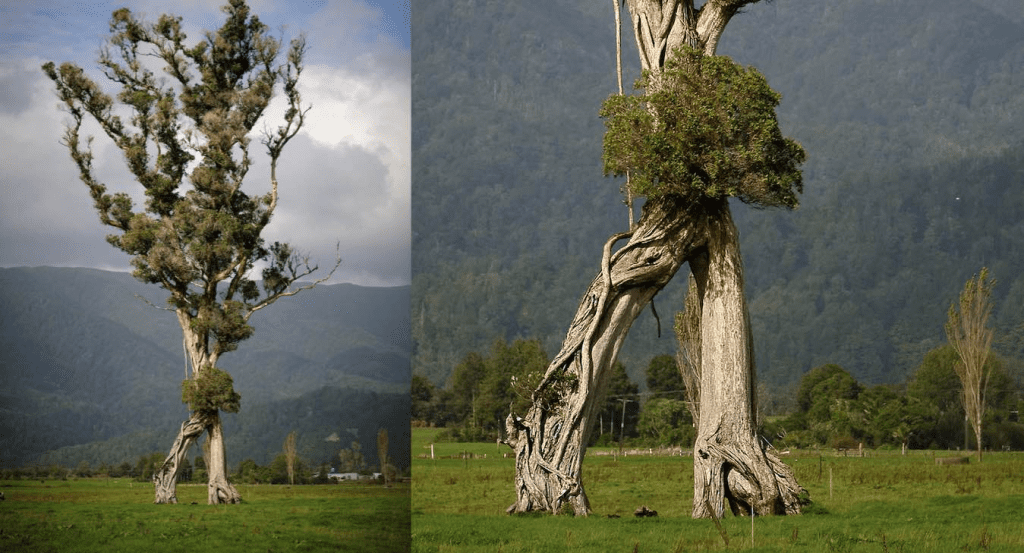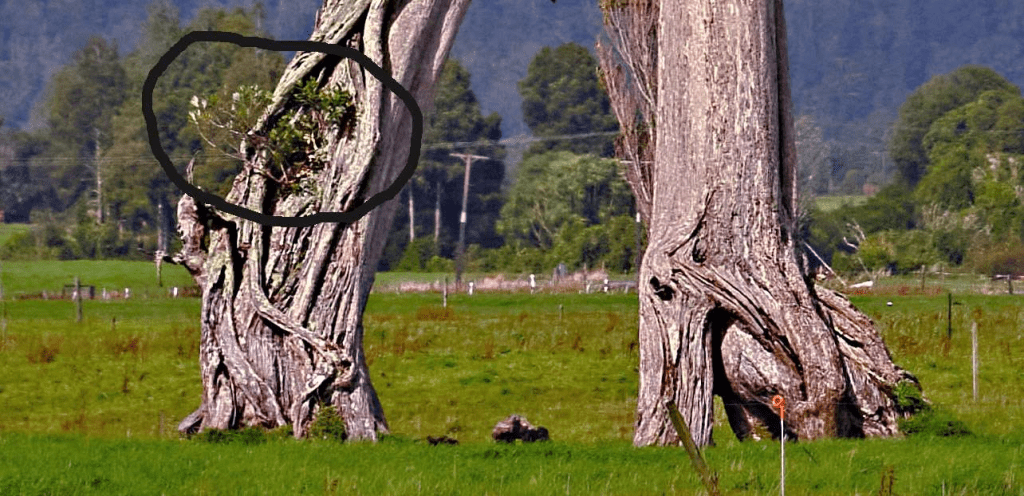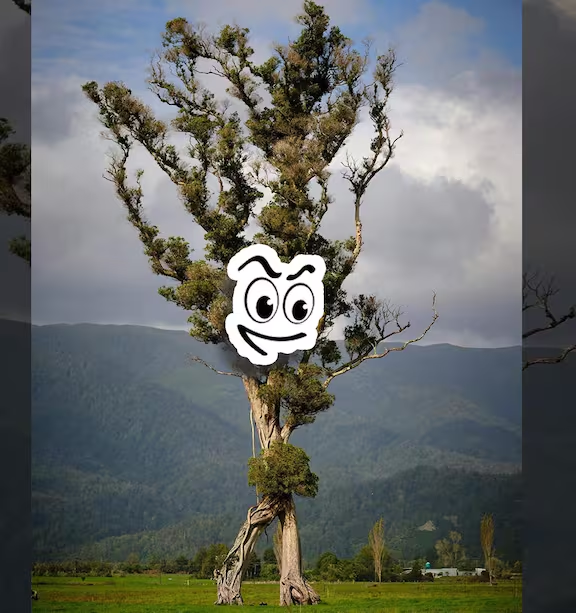
In an extraordinary celebration of nature’s wonders, a captivating Metrosideros robusta tree, affectionately known as “The Walking Tree,” has been crowned the 2024 Tree of the Year. With its distinctive, almost fantastical appearance, the tree has captured the imagination of people around the world, earning its place at the forefront of New Zealand’s arboreal beauty.
Located near a serene cemetery in the Karamea region on South Island, this remarkable tree features twin trunks that seem to resemble legs mid-stride, lending it a striking, anthropomorphic quality. Its shape has often drawn comparisons to the Ents from J.R.R. Tolkien’s The Lord of the Rings, mythical tree-like beings that move and protect the forests. This comparison highlights the whimsical and enchanting nature of the tree, which appears to have its own life force.
Despite its fantastical appearance, The Walking Tree is very much real and deeply rooted in New Zealand’s rich natural history. Thought to be hundreds of years old, its exact age remains a mystery, adding to the allure of this living giant. The Metrosideros robusta species, commonly known as the northern rātā, is known to live for centuries and, in some cases, can even reach up to 1,000 years. This longevity and resilience make The Walking Tree a symbol of endurance and natural beauty.

The tree was awarded the prestigious title of 2024 Tree of the Year following a public vote, where it triumphed with a remarkable 42% of the vote among six other worthy finalists in the New Zealand Arboricultural Association’s annual competition. The event celebrates not only the aesthetic beauty of trees but also their ecological and cultural significance. The competition aims to highlight the importance of preserving such living monuments and ensuring their legacy for future generations.
Richie Hill, president of the New Zealand Arboricultural Association, praised The Walking Tree as an iconic figure, emphasizing its unique role in showcasing the diversity of the country’s natural environment. “This tree is truly a must-see destination for those who appreciate the wonders of nature,” he said. “It serves as a living testament to the richness of New Zealand’s arboreal heritage and the need to protect these remarkable trees for the future.”
In addition to its physical beauty, The Walking Tree holds cultural and ecological value. As one of the most recognizable trees in New Zealand, it has become a symbol of the deep connection between people and the natural world. The tree’s location, near a cemetery, adds to its symbolic significance, representing both life and death in the cycles of nature. For many, it is a place of reflection and reverence, where the past and present converge in the quiet presence of this ancient living monument.
The competition’s aim to celebrate New Zealand’s trees goes beyond just recognition and accolades; it encourages the public to acknowledge the importance of preserving trees that are an integral part of the nation’s identity. The New Zealand Arboricultural Association’s efforts have brought to light the urgent need for conservation, particularly in the face of environmental threats such as deforestation and climate change.

The Walking Tree’s victory serves as a reminder of the delicate balance between humanity and nature. It calls attention to the extraordinary ways trees can shape our landscapes and cultures, offering a sense of connection to something far greater than ourselves. As The Walking Tree stands tall in the Karamea region, its unusual form continues to inspire awe, sparking a sense of wonder in all who encounter it.
As New Zealand celebrates its natural wonders, the Walking Tree’s recognition as Tree of the Year helps keep the focus on the importance of these incredible living organisms. This triumph in the annual competition also serves as a powerful reminder that nature’s beauty often lies in the unexpected, where a tree that “walks” captures the imagination and reminds us of the magic inherent in the world around us.


